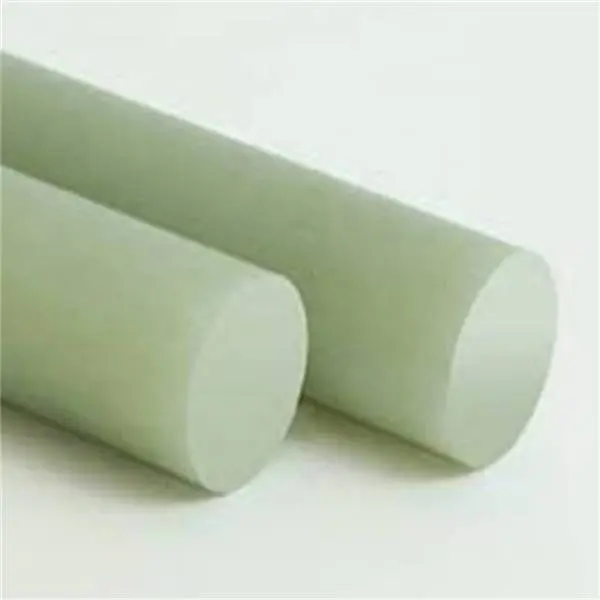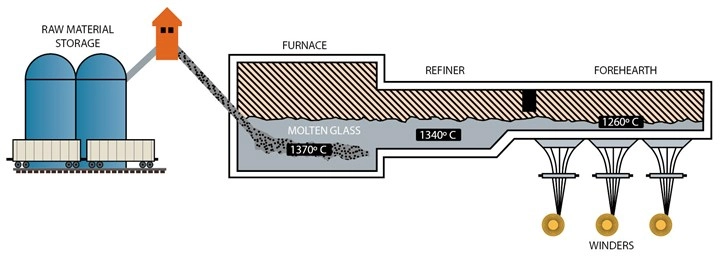Composite material is a mixture of two or more completely different materials. There is a distinguishable border between them. Composite material is a blend of fiber and resin mixed in an appropriate form.
One of the exclusive properties of composite material is that it has a high specific strength. Composite materials are being used as practical substitutes for metallic materials in assemblies. Their weight is the first consideration for further processing. For example, aerospace structures, high-speed boats, and trains.
What is Fiberglass-Reinforced Epoxy?
Fiberglass is a composite material comprising glass fiber as a reinforcement and epoxy are matrices during composite formation. The glass fibers are generally woven into the fabric, having a weight per square yard. Epoxy fiberglass formation depends upon the type of weave and the type of glass. Several kinds of epoxy resins and epoxy-related products are available.
The properties of the glass fiber component play an important role in some mechanical properties of the fiberglass. The volume ratio of the two components and the epoxy component plays a significant role in the mechanical properties of glass.

Applications of Glass-Epoxy Composite
- They play a role as electrical insulators in induction systems
- They have a role in static electrical insulators in power installations
- They have a major role in the construction of electric furnaces, induction furnaces, and annealing furnaces
- Glass-Epoxy composites, in manufacturing flat gaskets and sealing components
- They have high-frequency welding technology
- They have the capability of Insulation of press plates
- They are used in high-voltage switchgear
Pros And Cons of Fiberglass-Reinforced Epoxy
In subsurface construction work, fiberglass-reinforced epoxy is a substitute for other materials. Such as carbon steel, HDPE, PVC, and stainless steel for the building of good coatings.
Fiberglass-reinforced epoxy can be used in many applications due to its major physical and chemical characteristics such as durability, high tensile strength, chemical resistance, electric insulation, and relative cost-effectiveness. Some extra benefits consist of lighter material weight and informal installation and fixing.
Fiberglass-reinforced epoxy well casings have several advantages over other traditional casing materials. In water well applications where low-priced corrosion-resistant well solutions must need fiberglass-reinforced epoxy casings. They have great importance in water-related tools.
Fiberglass-reinforced epoxy has various advantages over high-density polyethylene, steel, and polyvinylchloride. Fiberglass-reinforced epoxy casings may not be perfect for every single situation.
Disadvantages
Some disadvantages are given below:
- It may experience a higher cost than other materials
- It may not be as available as other construction materials
- It requires special handling
- It is less resistant to hydraulic collapse
Main features of Glass-Epoxy Composite
- Little thermal conductivity
- Good high-temperature resistance ability
- Exceptional dimensional stability
- Appropriate for sealing applications
- Exceptional toughness
- High mechanical resistance
- Good dielectric strength
- High wear resistance
- Excellent compressive strength

Major Characteristics
It is also imaginable for us to assume the complete implementation of the project in our specialized workshop. It is capable of retaining the original shape. permitting it to adhere to an inclusive range of metal surface structures. Some characteristics of epoxy glass make it perfect as a corrosion-preventative coating and casings.
- It has low moisture absorption ability.
- It has low chemical reactivity
- It has a high tensile strength
- It has a strong radiation resistance
Manufacturing
Some products like pipes are composite materials comprised of a glass fiber matrix. An epoxy resin acts as reinforcement. Epoxy, or polyepoxide, is a resin generated by the condensation and polymerization of epoxide monomers using a hardener or any other equipment.
Steps of Manufacturing
Batching
After batching, we perform the heating process or melting process immediately. Batching is the first step during the formation of fiberglass. We mix raw materials of equal quantities in a tank.
Heating and Melting
After the preparation of the batch, it is relocated to a furnace for melting. We can heat furnaces in different ways, by electricity, and fossil fuel. The temperature of the furnace must be in control to maintain an even, steady flow of glass. The furnace must have a temperature range of 1200-1500 °C for the melting of glass. Molten glass relocates itself to the forming equipment. A long cylindrical tube is also known as a forehearth located at the end of the furnace.
Fabrication
We use different types of processes in the manufacturing of fibers, depending on the type of fiber. Textile fibers may form molten glass straight from the furnace while other fibers take some unique processes for their formation. We use the spinner process to make glass wool. The molten glass streams convert into fibers by a descending discharge of air, hot gas, or both. We use epoxy resin as a matrix for the reinforcement of fibers.

We can use thermosetting material such as “Glass fiber–reinforced epoxy resin” for the sheath. The lowest mandatory thickness of it is 4 mm. Medicating and mingling of the epoxy resin components and installation of different layers of resin and glass fiber. It should do it according to the instructions of the manufacturer.
We should layer the spotless, organized surface of the substrate with the particular epoxy resin. A manufacturer must fill the remaining cracks and cavities in concrete surfaces with resin. We apply the coat “wet-in-wet,” and a resin sheet. The resin sheet should be blast-cleaned or coarsened with sandpaper before the next layer of the laminate is applied.
We should cover the surface with resin. The glass fiber and the resin must distribute themselves in process of rolling and pressing. We must saturate the glass-fiber reinforcement completely and remove the air. Glass fabric reinforcements must have an overlay of between 25- and 50 mm. We use a mixing kit for measuring the quantity of the material. We must complete the process of mixing and dosing following the manufacturer’s instructions.
To meet a good bond of the film to bricks, the concluding and sealing layer of thermosetting resin is treated with silver sand.
